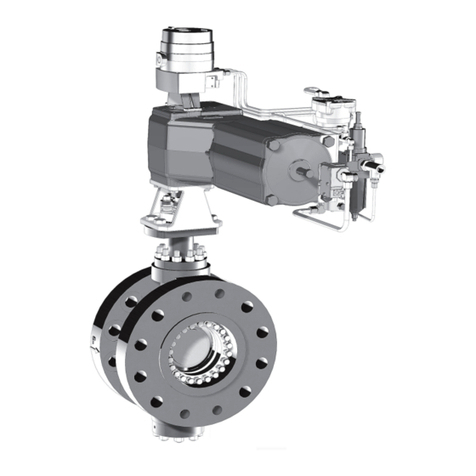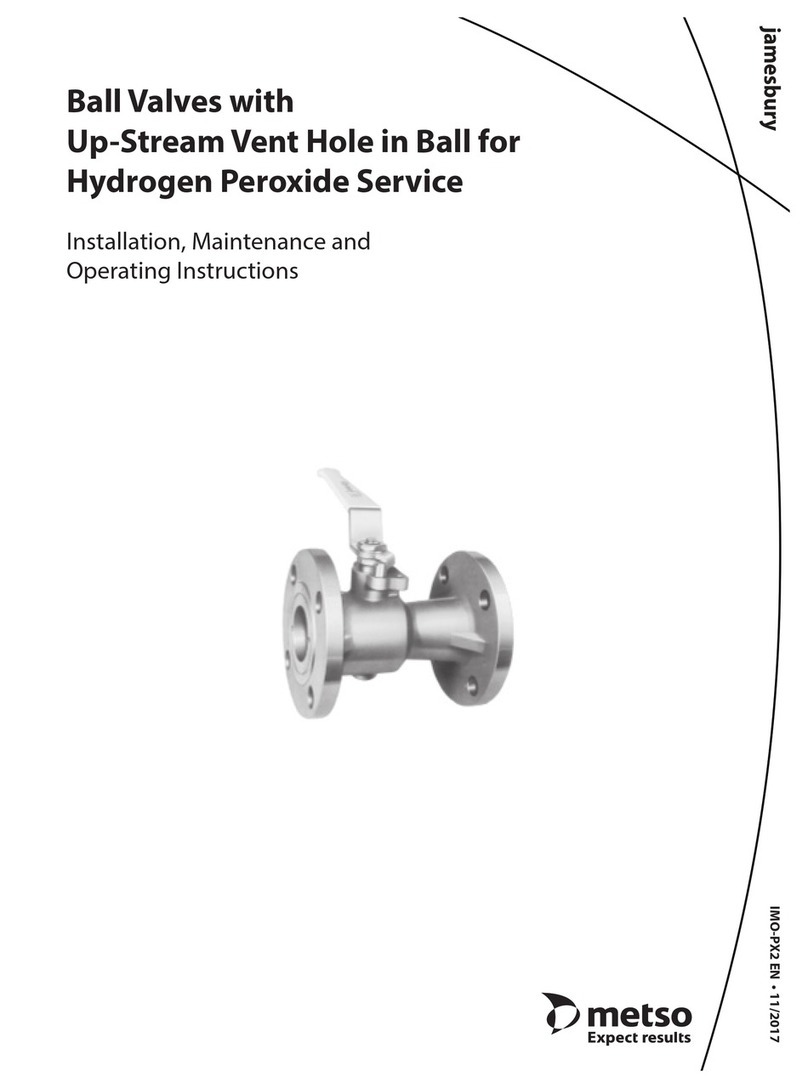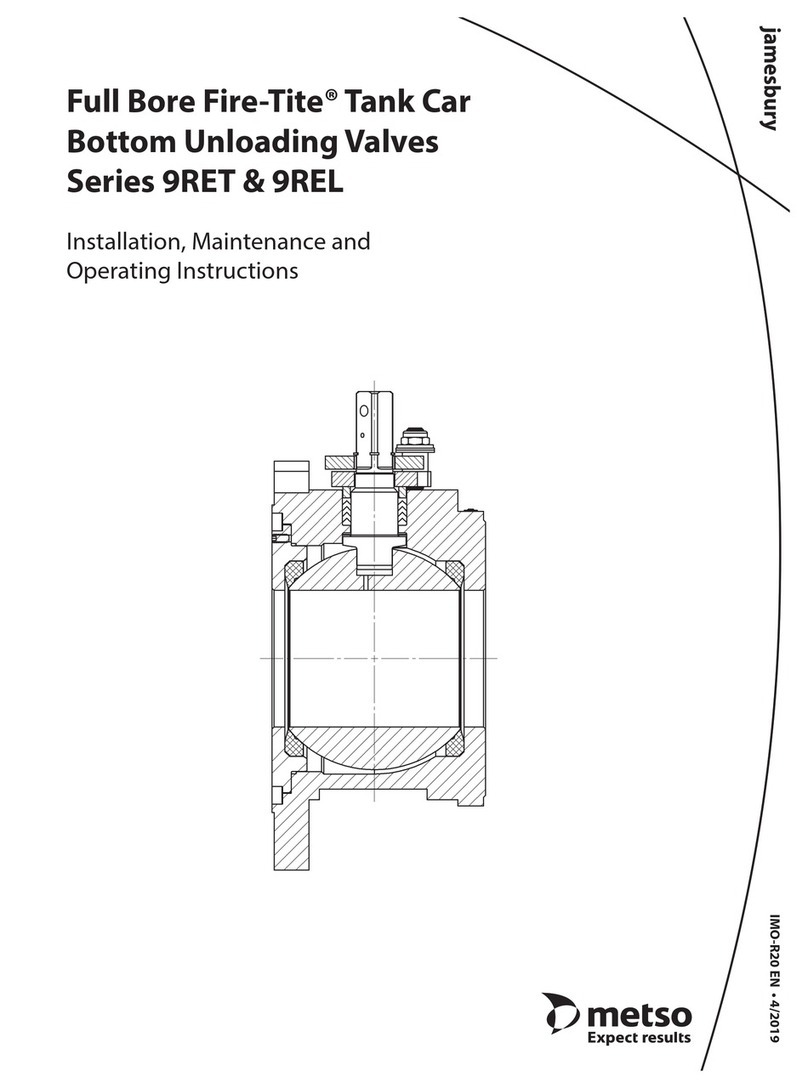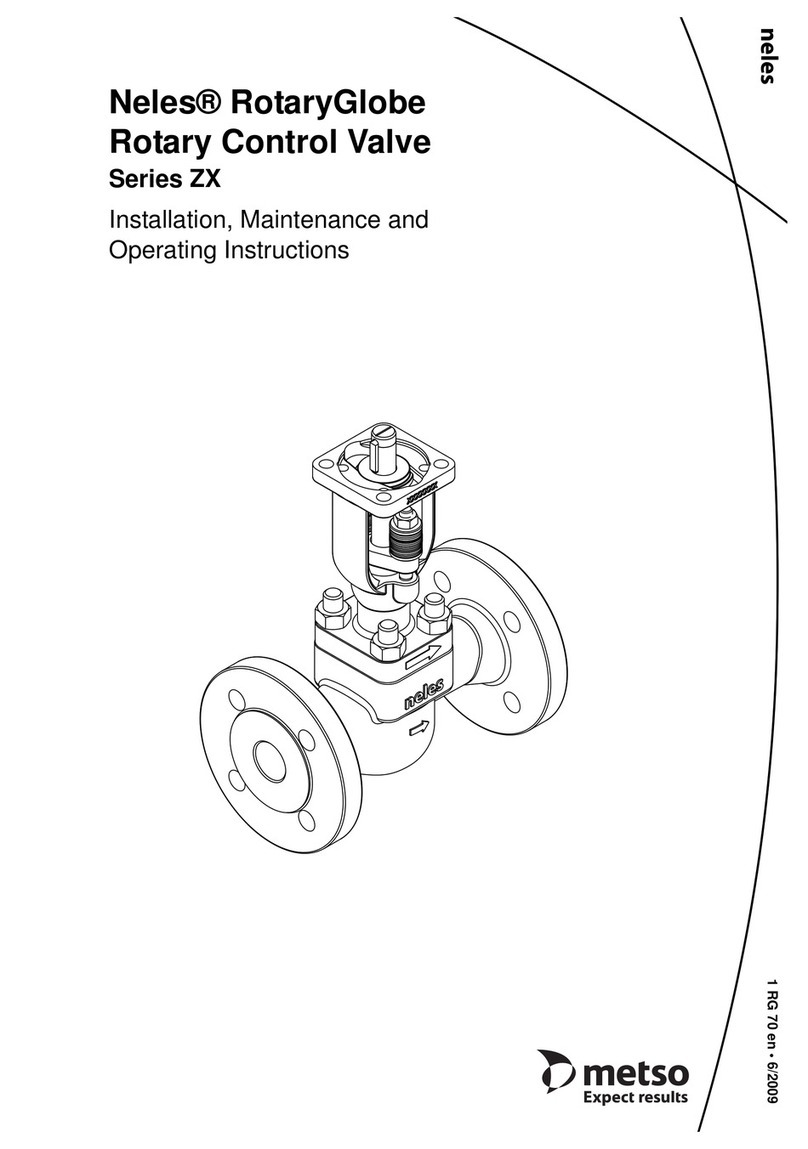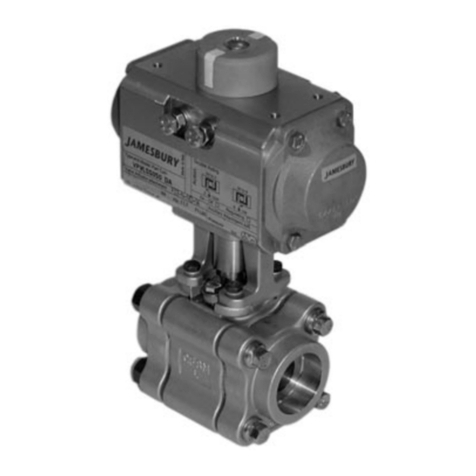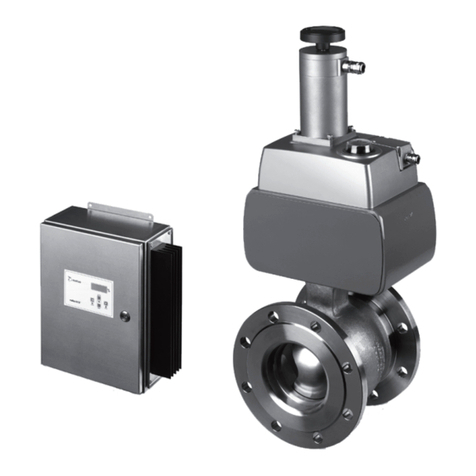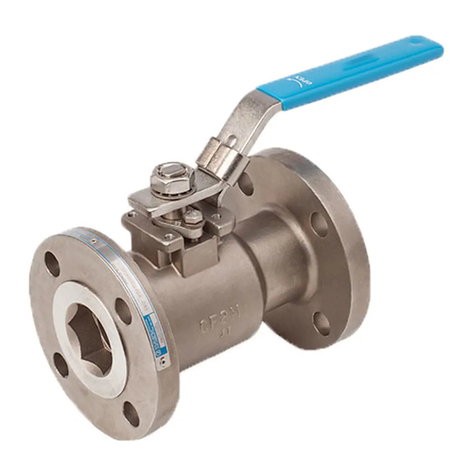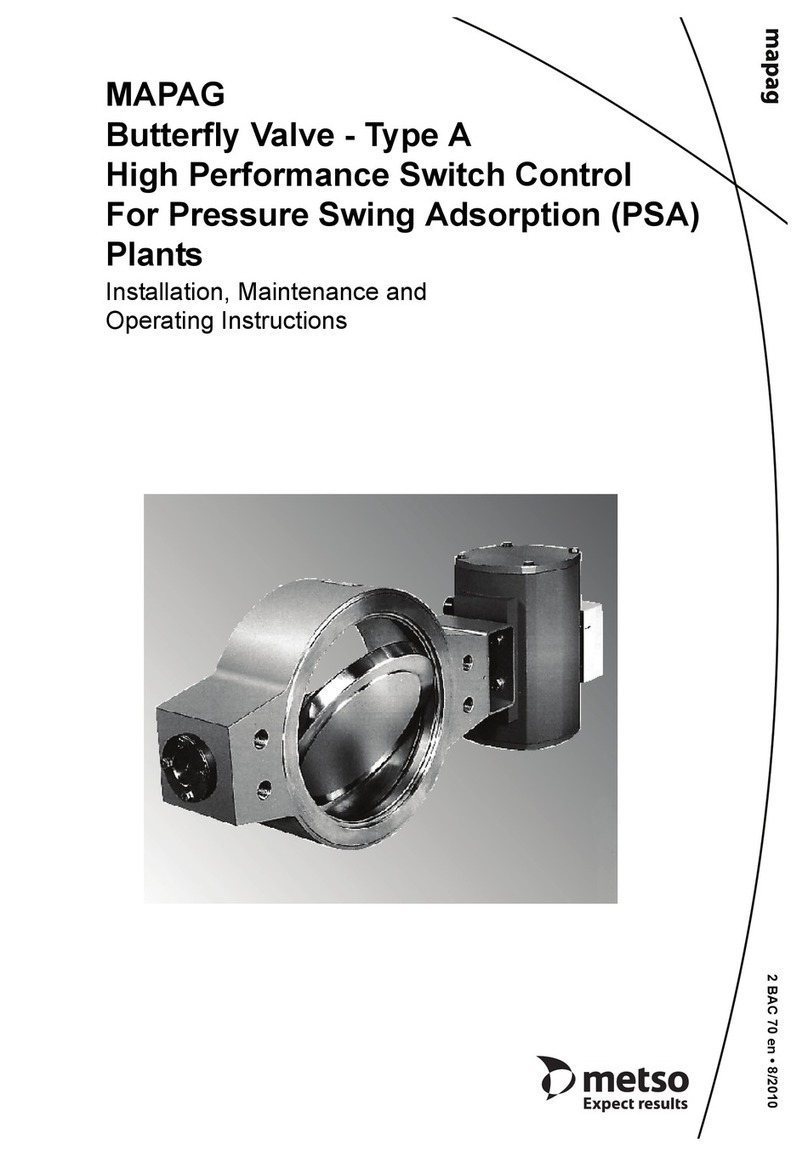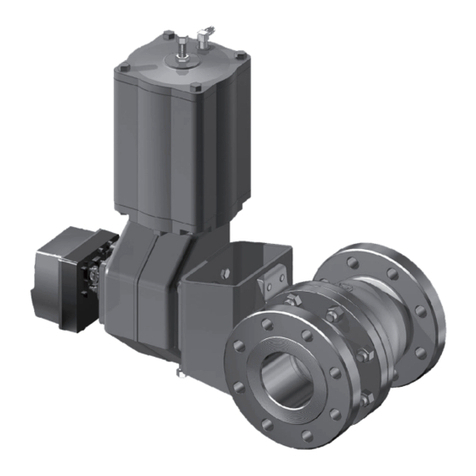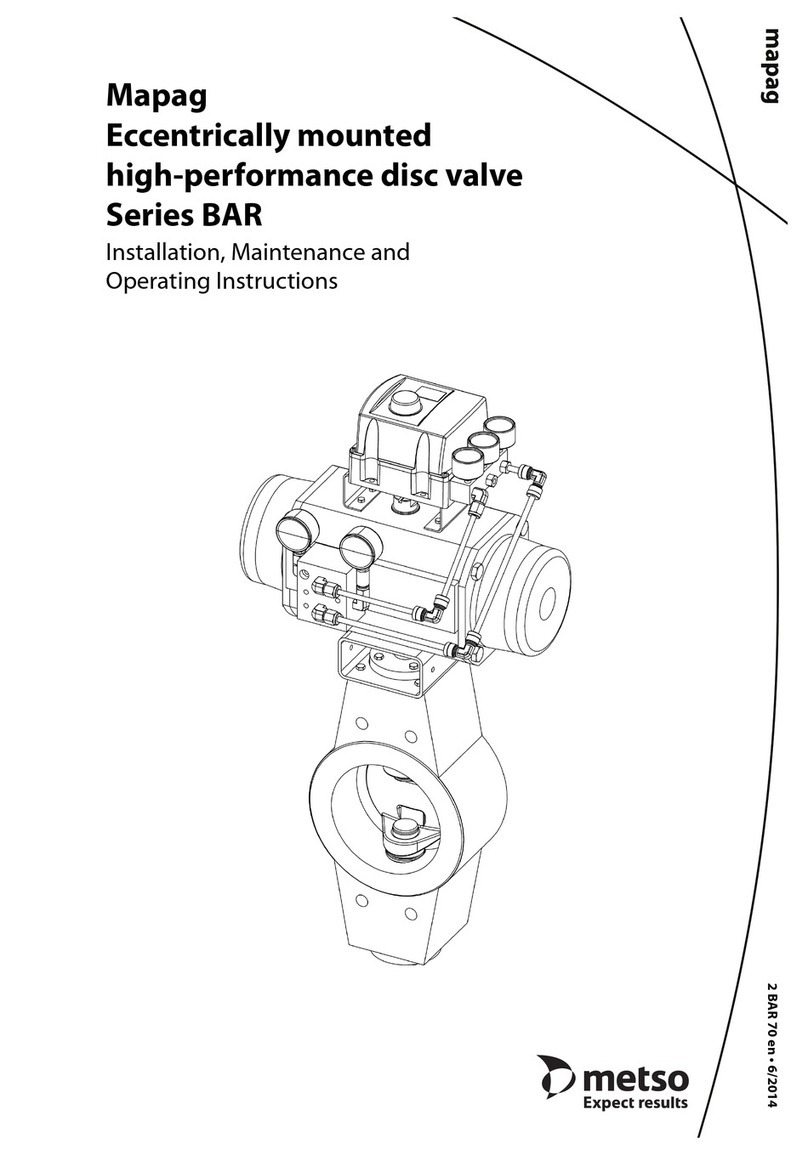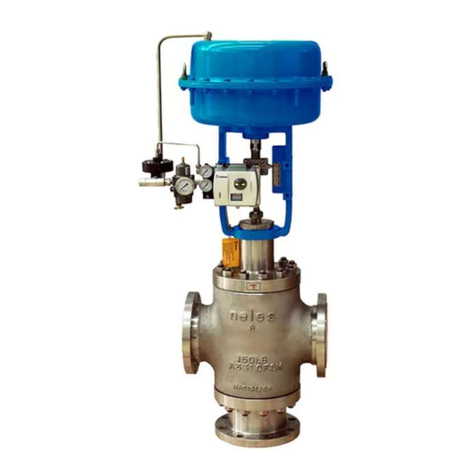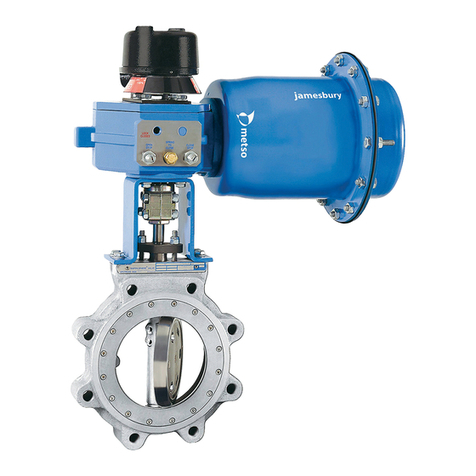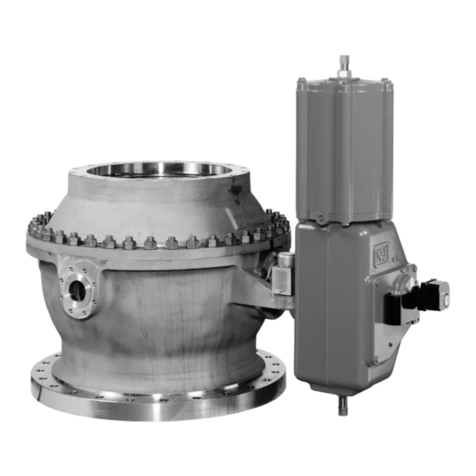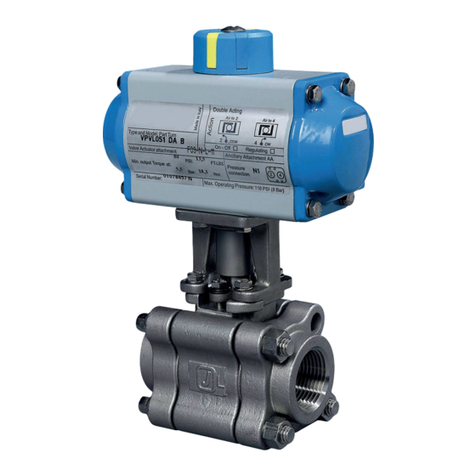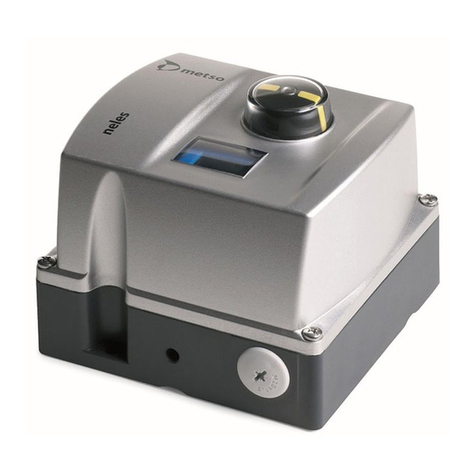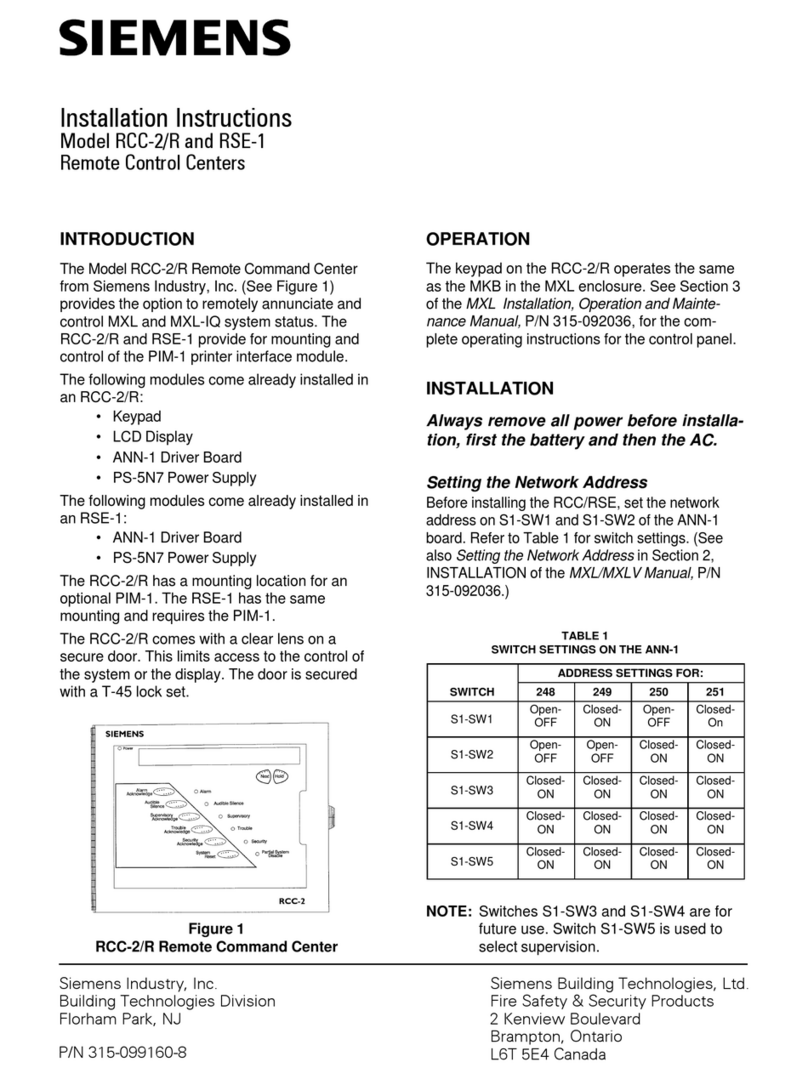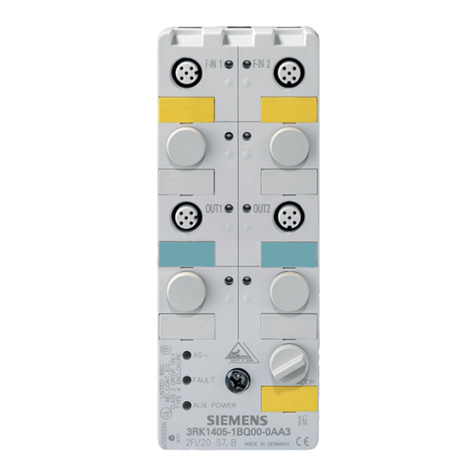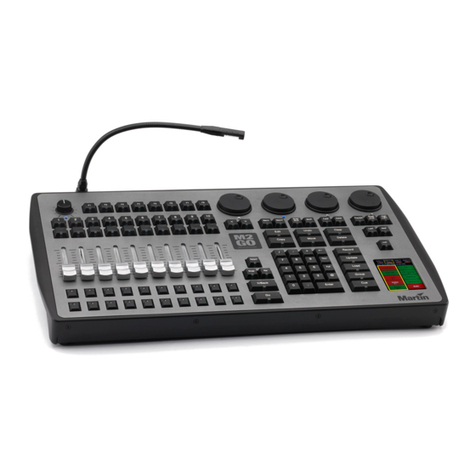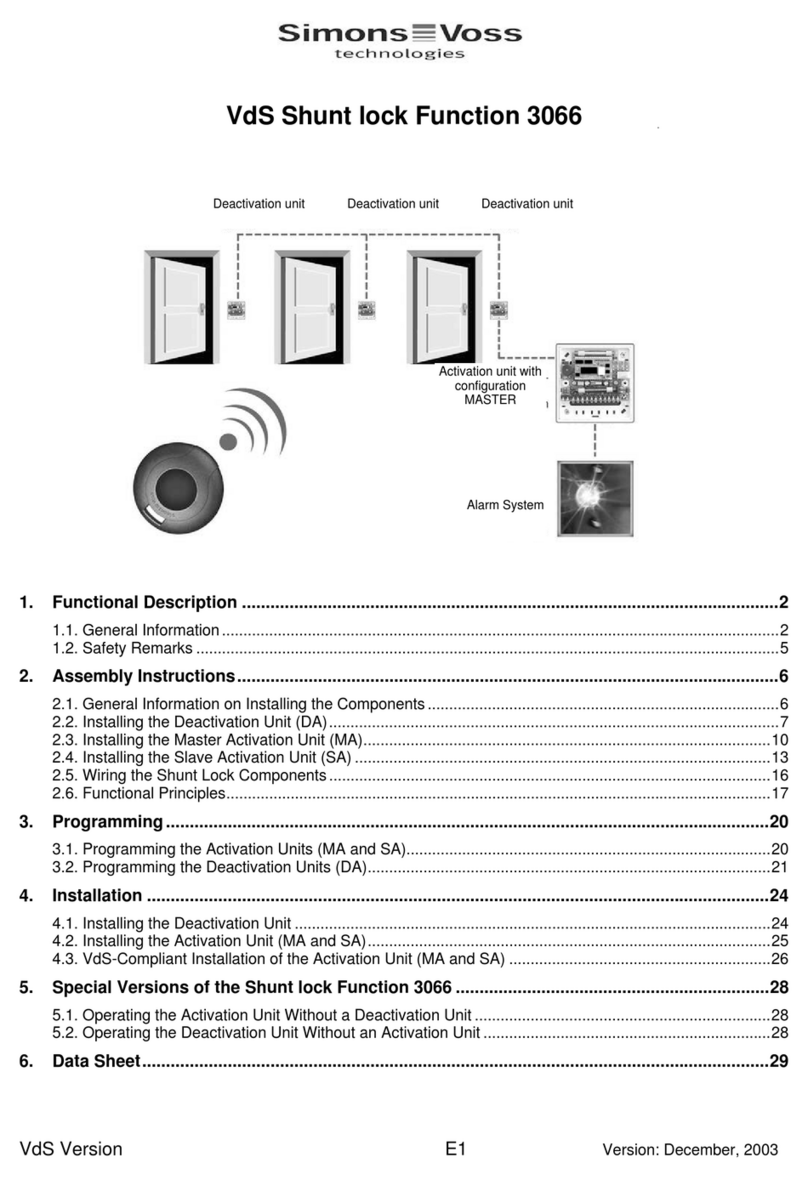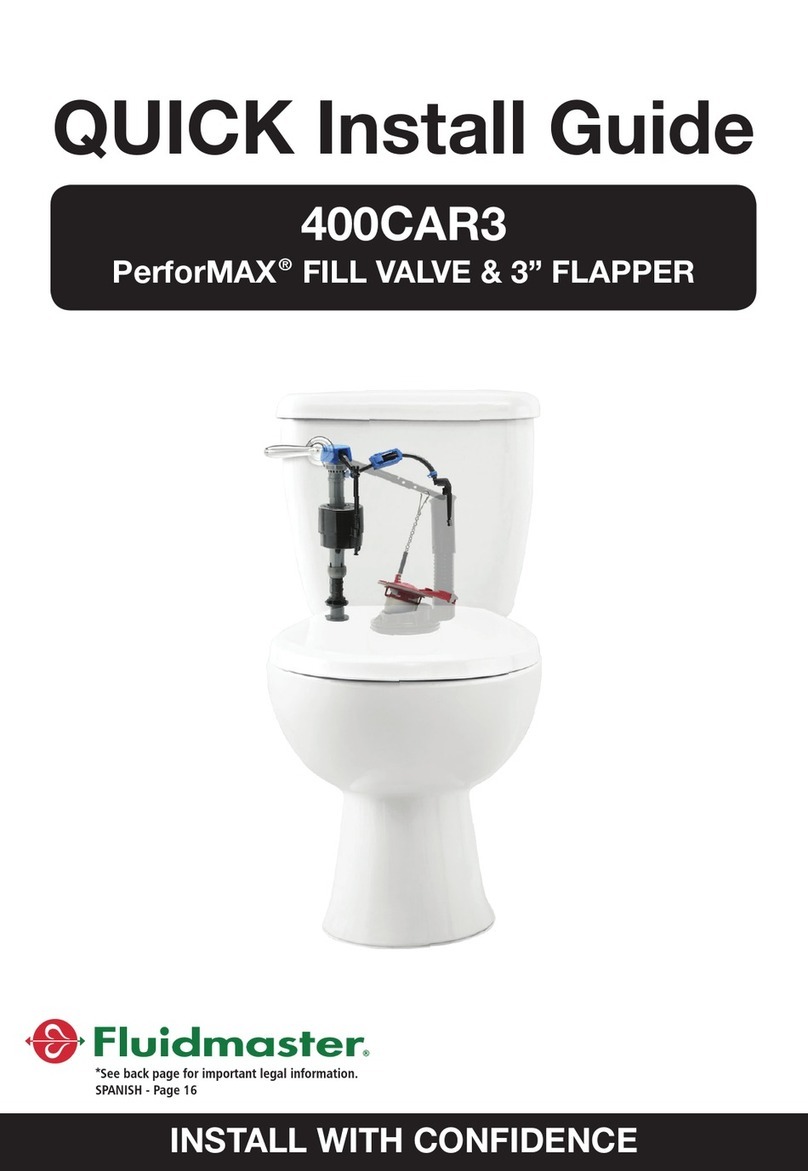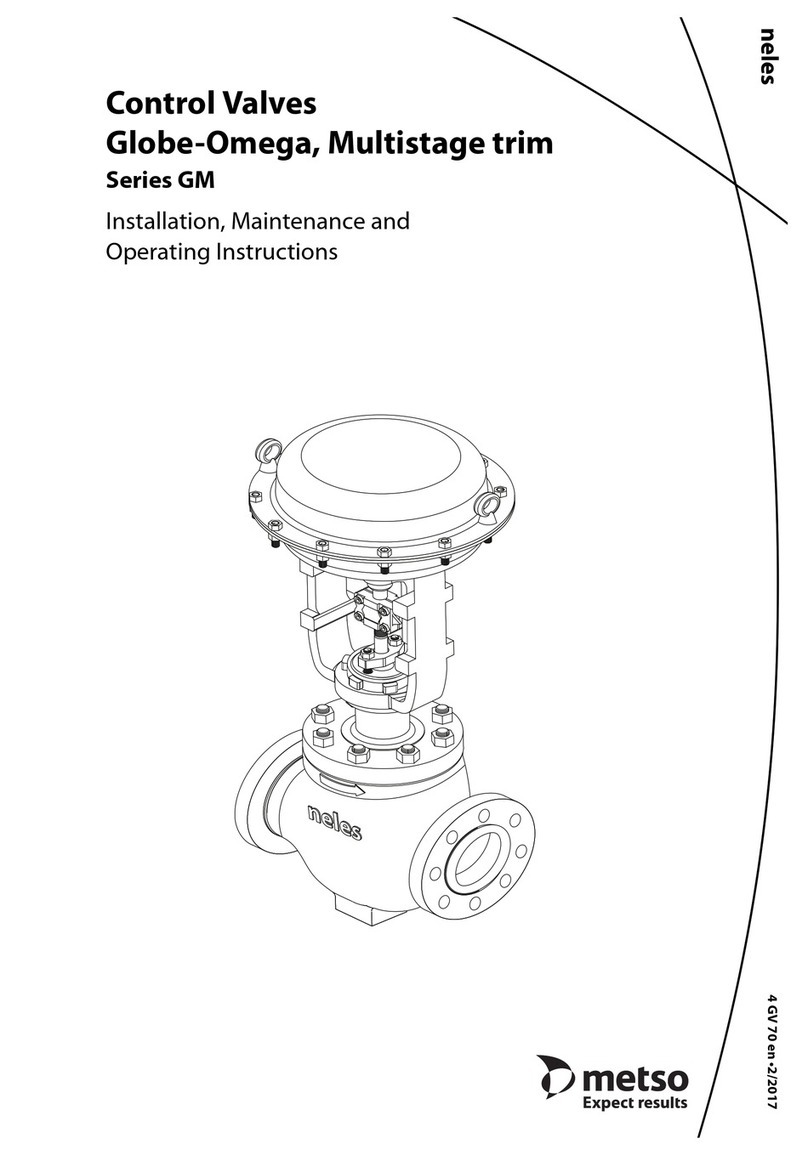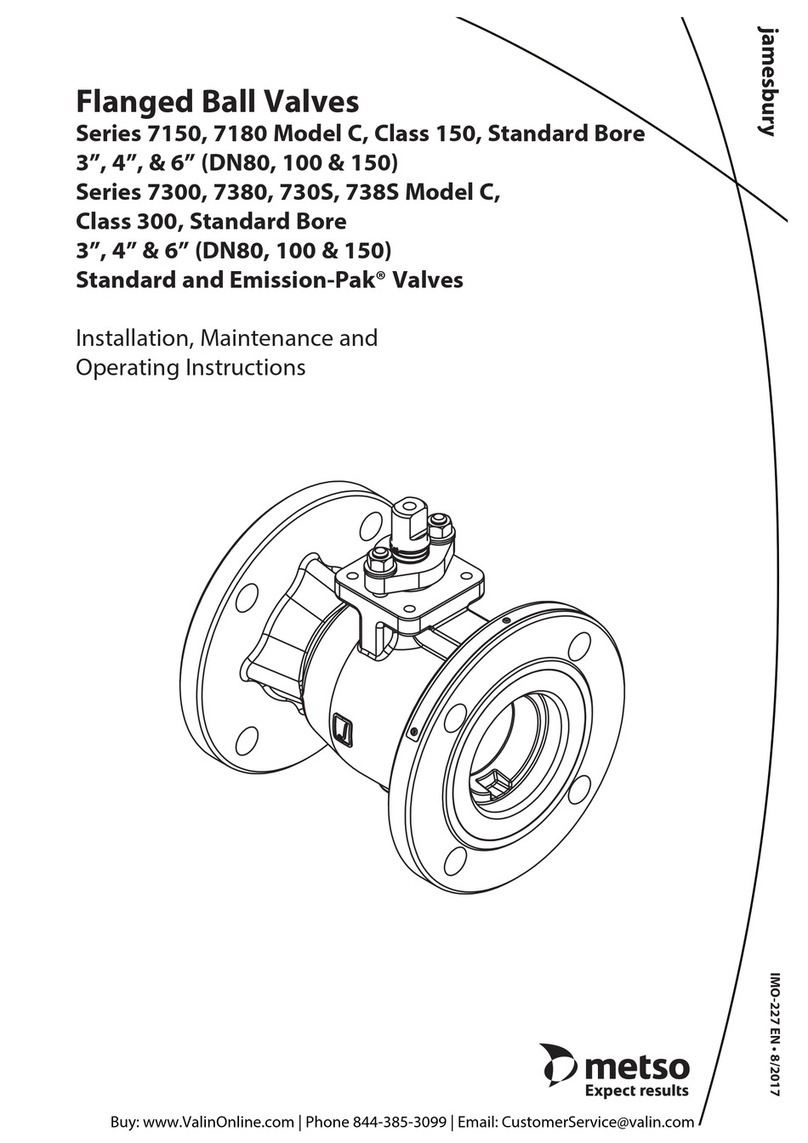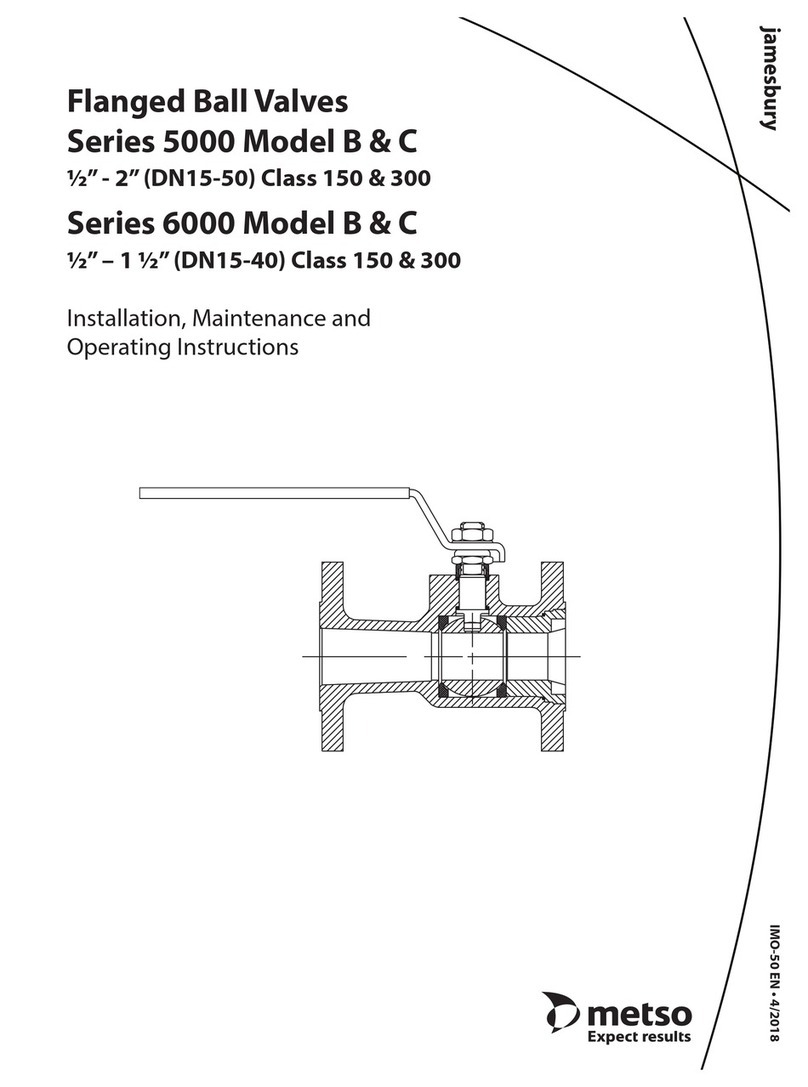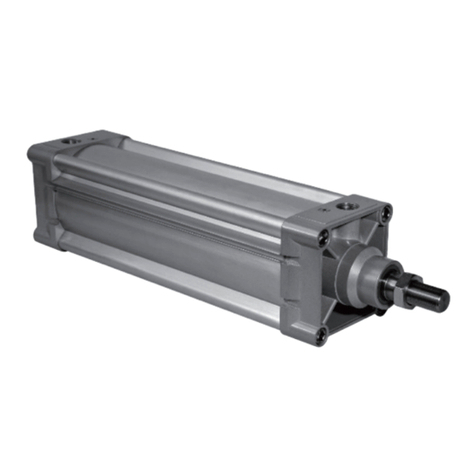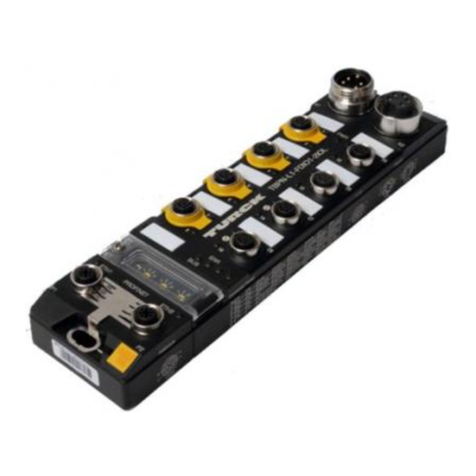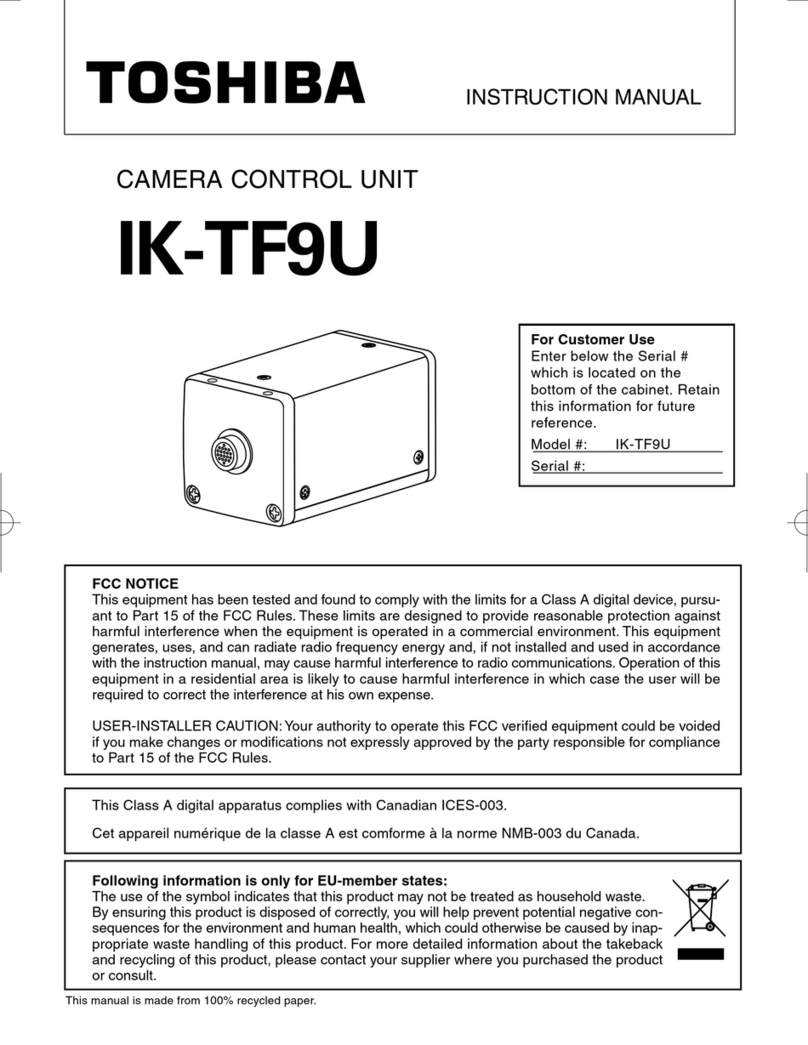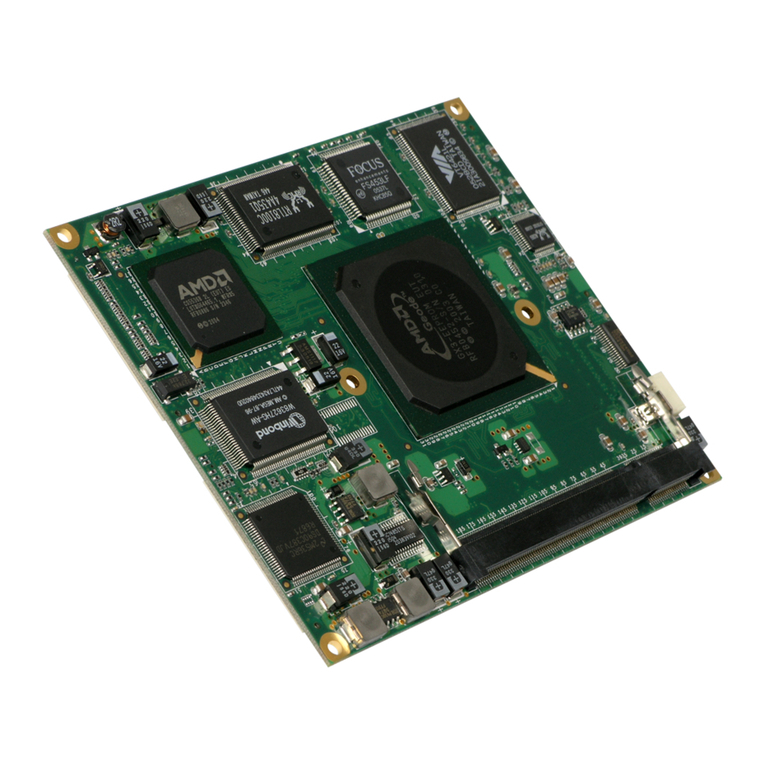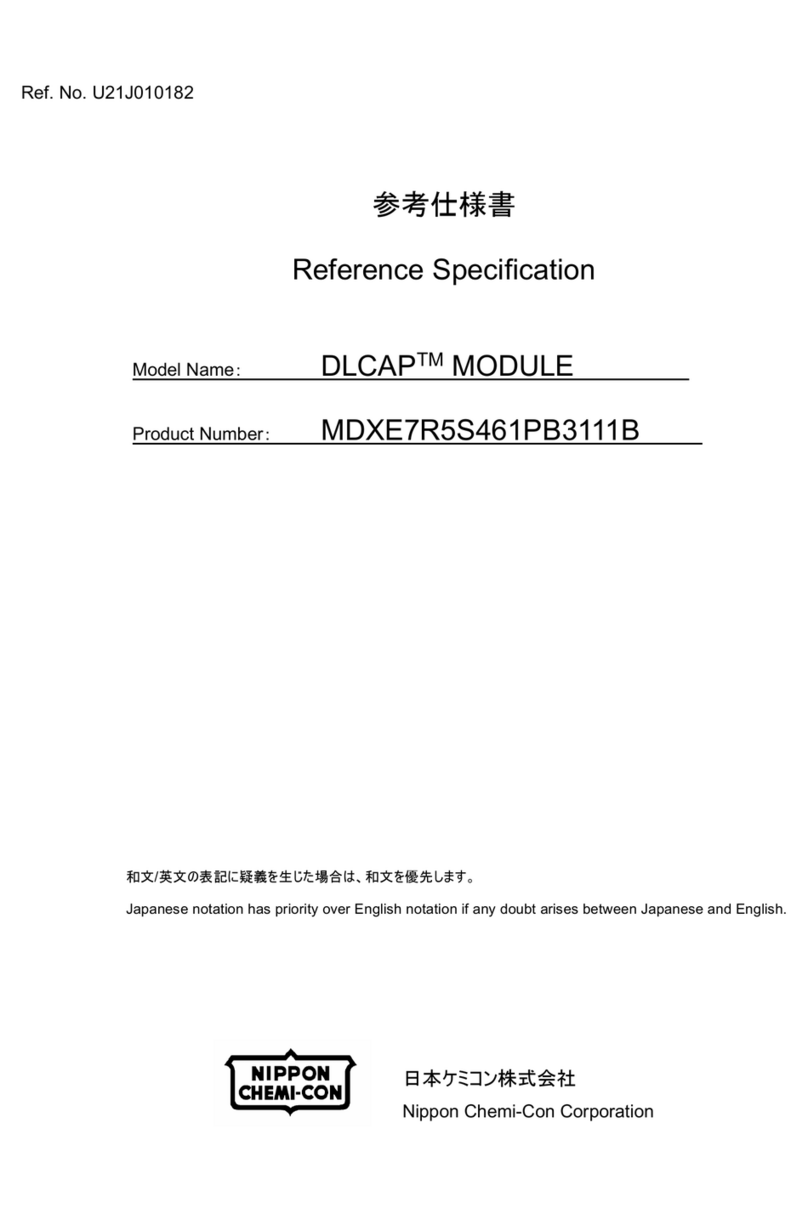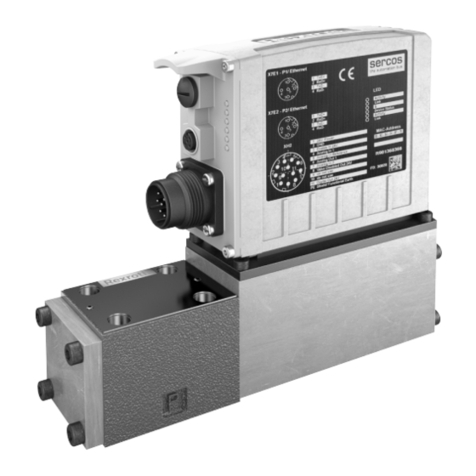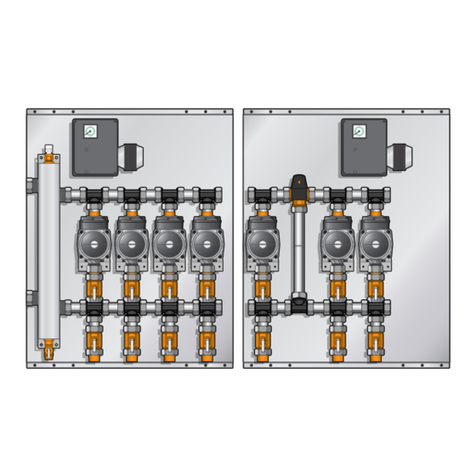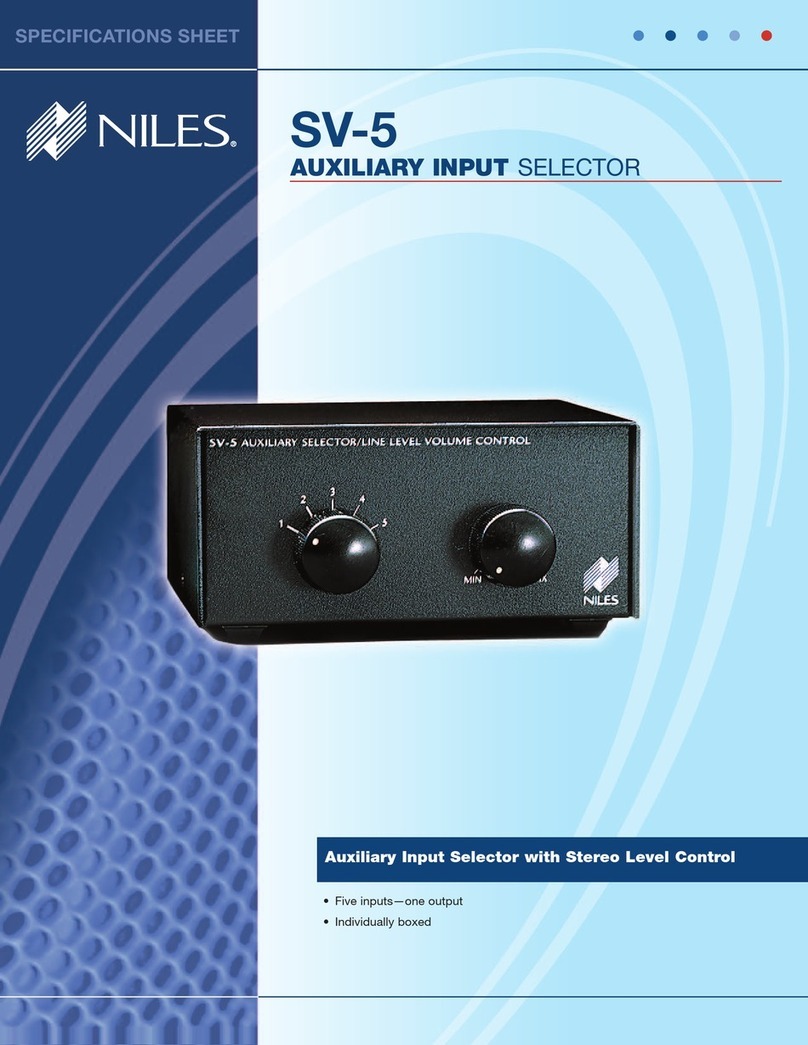
1 E2 70 en 7
4.2.1 Disassembly
1. Detach the air supply conduit from the actuator. Also
detach any cables preventing the removal of the actuator.
2. Remove the actuator from the bracket (5) by
unscrewing the fixing screws. Pull the actuator from
the shaft (4). Detaching the actuator is described in
more detail in Section 4.7.1.
3. Detach the key (20) from the shaft.
4. Detach the bracket (5) from the body (1) by opening
the screws (13) M12 or M16.
5. Detach the bearing (8), the axial bearing (7) and the
lock ring (19).
6. Loosen the strain ring (9) with a special tool, see
Table 4.
7. Pull the shaft (4), and lift it and gland bushing (10)
and parts (11, 12, 17) out of the valve body.
8. Pull the gland bushing off the shaft while rotating.
Now the gland packing may be disassembled.
9. Remove the gasket (16) between the gland bushing
and the body from the valve body.
4.2.2 Replacing parts
The gland packing set includes the V-ring set (11) and
the spring (12). Replace both parts at the same time.
The O-ring (17) should be replaced if it is damaged.
The main purpose of the O-ring is to protect the shaft
from erosive media, such as sludge, and it therefore
does not need to be changed regularly.
4.2.3 Assembly
1. Apply silicon grease to the O-ring (17) and install it
into the gland bushing (10) cavity.
2. Slip the gland bushing (10) onto the shaft (4).
3. Install the spring (12) into the bottom of the gland
bushing (10). Before installation, the spiral should
be completely compressed once, for example in a
vice. This will make installation of the strain ring eas-
ier, since the working height of the spiral is roughly
0.6 x the free height of the spring.
4. Once the spiral is in place, slip the sheet ring (15)
into position. After this, install the V-ring (11) onto the
shaft, one by one.
The order from bottom to top of the different rings is as
follows:
❑base ring
❑angle rings
❑saddle ring
5. Place the gasket (16) into the valve body.
6. Insert the shaft together with the gland bushing
back into the valve body.
7. The shaft joint on the ball has been shaped in such
a way that the shaft only fits seat when it is in the
correct position. Check the direction of the bore by
observing the indicator line at the top of the shaft,
and take the position of the keyway into account
when you install the actuator.
8. Lubricate the thread of the strain ring with, for exam-
ple, Molykote. Then fasten the strain ring (9). When
correctly fastened, the ring shoulder must be at least
on a level with the body, or 0.1 mm below it. The tight-
ening torques are given in Table 4. The shoulder of the
strain ring must not remain above the surface level of
the body.
9. Make sure that the bracket (5) is not carrying the
weight of the valve because this would have an
immediate effect on the bearing clearance.
10.Install the lock ring (19), the axial bearing (7) and
the bearing (8) onto the shaft.
11.Attach the bracket to the valve body. While fastening
the screws, make sure that the hole in the bracket is
properly centered in relation to the shaft. For the
correct tightening torques, see Table 5.
12.Install the actuator. See Section 4.7.2.
CAUTION:
Do not detach or disassemble a pressurized valve!
This warning also applies to individual compo-
nents (13).
NOTE:
Replace the gasket (16) between the gland bushing (10)
and the body (1) whenever the strain ring has been loos-
ened. Leakage of the V-ring set (11) and leakage of the
gasket (16) may cause similar symptoms.
NOTE:
Make sure you do not damage the O-ring with the shaft
keyway and the shaft shoulder.
NOTE:
Make sure you do not damage the gland packing rings
with the shaft keyway or shaft shoulder.
Table 4 Tightening torques of strain ring
Nominal
size
DN Thread Torque
Nm Tool
DIN 1810A Special
tool
25/20 M39 x 1.5 190 34-36 F14096_01
40/32 M45 x 1.5 250 40-42 F14096_1H
50/40 M50 x 2 320 45-50 F14096_02
80/65 M64 x 2 340 58-62 F14096_03
100/80 M75 x 2 560 68-75 F14096_04
150/100 M95 x 2 1330 80-90 F14096_06
200 M95 x 2 1330 80-90 F14096_06
Fig. 7 Sealing of the shaft, A-construction
0...0,1 mm bellow the
top level of the bracket
bracket (5)
strain ring
(9)
saddle ring
(11)
angle ring
(11)
base rings
(11)
O-ring
(17)
sheet ring
(15)
spring
(12)
gland
bushing
(10)
gasket (16)shaft (4)

















